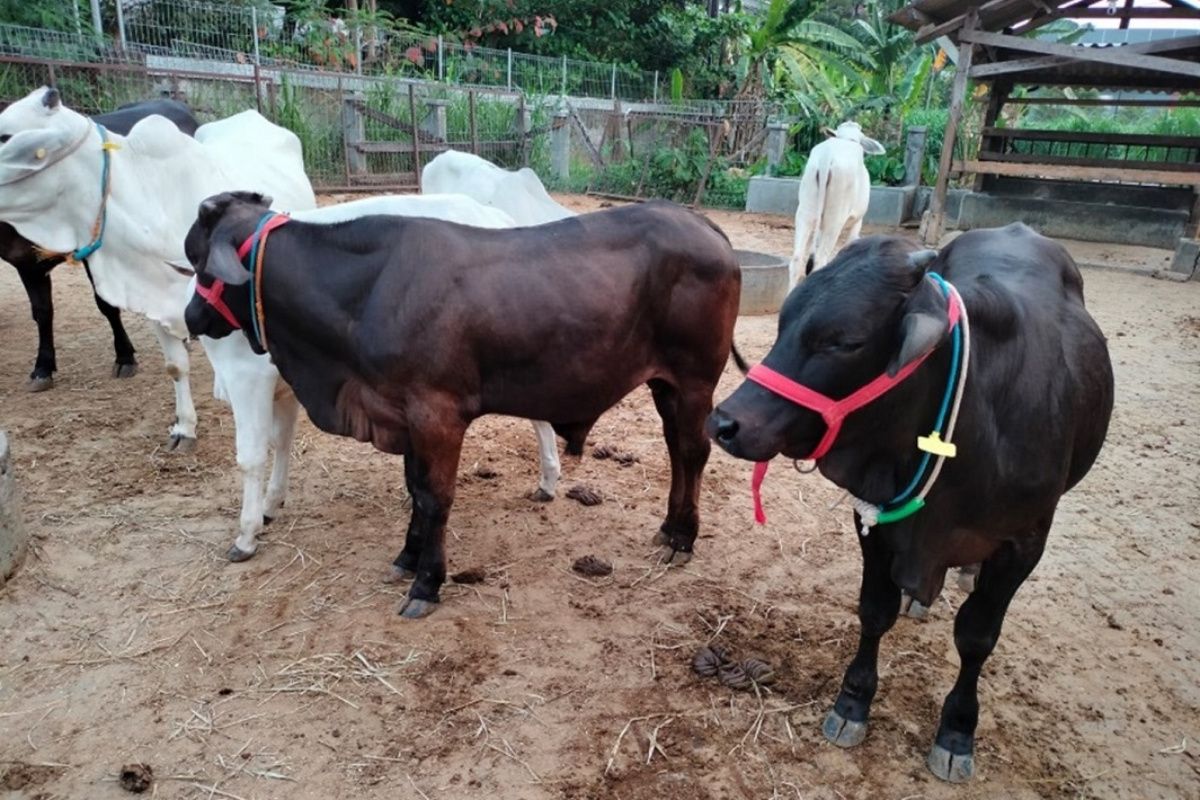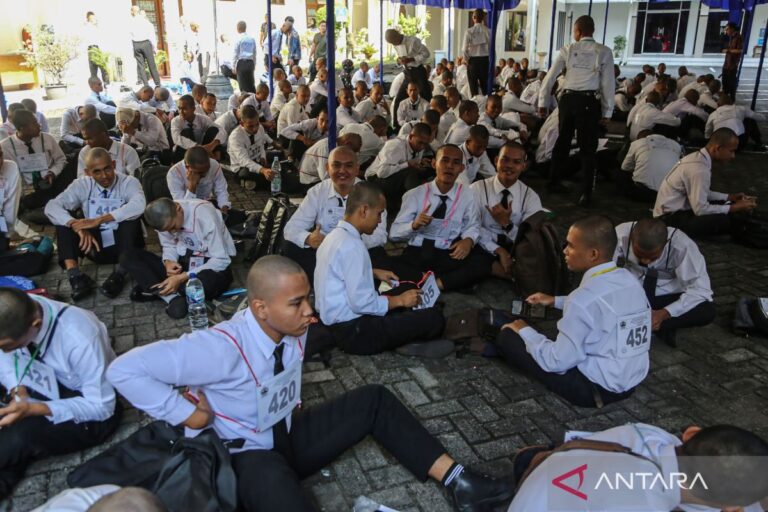
Jakarta (ANTARA) – Gadjah Mada University (UGM) has developed a new type of cow, called Gama Cow, which is short for “gallant and courageous” cow. macho“.
This cow is the result of genetic innovation and has been officially designated by the Ministry of Agriculture (Kementan) as a new breed of beef cattle or Indonesian landrace.
The inauguration was foreseen by the Decree of the Minister of Agriculture of the Republic of Indonesia Number 840/Kpts/HK.150/M/09/2025 and was delivered directly by the Deputy Minister of Agriculture of the Republic of Indonesia Sudaryono accompanied by the Regent of Bogor Rudy Susmanto.
The development was carried out by the Faculty of Animal Husbandry at UGM in collaboration with PT Widodo Makmur Perkasa Tbk (WMPP) and the University of Liège, Belgium.
To know it, here are some facts about the Gama Cow, a cow produced by innovation in this country.
Read also: Deputy Minister of Agriculture: 1.5 million hectares of land prepared for investments in livestock
1. The result of crossing three types of livestock
Gama cattle are the result of a cross between three types of superior cattle, namely the Belgian Blue, Wagyu and Brahman. The three types of cattle were chosen with careful consideration by the researchers.
Belgian Blue cattle are known for having large, muscular bodies, Wagyu cattle are superior because their meat is tender and rich in flavor, while Brahman cattle have good adaptability to tropical climates and a large stomach.
Belgian Blue mothers often have difficulty giving birth due to the large weight of their offspring. Then, the researchers combined it with Brahman cows that have wider bodies and hips to make the birth process easier.
This consideration is also a solution for local Indonesian cows who often have difficulty giving birth and are subjected to cesarean operations.
Read also: Government encourages breeding and fattening of domestic live cattle
2. It has many advantages
Gama cattle have various advantages, including double musculature and the production of top-quality meat.
Gama calves are usually born with an average weight of 36 kilograms, but can grow quickly if fed well and regularly.
Gama cows also have a small bone structure, so they rarely experience difficulties during the birthing process.
Unlike Belgian Blue cattle which are sensitive to heat, Gama cattle are adapted to Indonesia’s tropical climate. This is because it was crossed with Brahman cattle resistant to heat and tropical diseases.
Read also: Malang “pilot project” for the digitalization of the dairy farming ecosystem
3. Results of 13 years of research
The head of the Gama cow research group, Prof. Ali Agus, revealed that research on Gama cattle has been conducted for about 13 years.
After a long period of research, researchers have managed to create a new breed of superior quality local cattle that has many advantages over other local cattle.
4. Large, quality carcass
The carcass is a part of the body of a cow in the form of whole meat ready to be processed after being slaughtered, skinned, removed from blood and entrails and separated from parts that cannot be consumed such as the head and feet.
Gama cattle are known to have a carcass percentage of between 65% and 68%, higher than that of cattle in general.
At the age of 30 months or 2.5 years, Gama cattle can reach a weight of 700-800 kilograms and are suitable for slaughter.
Read also: Here’s why the nutritional quality of local and imported beef can be different
5. Heavier in weight than local cattle
At the age of 2 years, Gama cattle can weigh up to 550-600 kilograms, which increases to 700-800 kilograms at the age of 2.5 years. In fact, at the age of 3, Gama cattle can reach a weight of up to 900 kilograms.
This figure far exceeds cattle from other crossbreeds, which generally take 3-4 years to reach ideal weight, a difference of around 100 kilograms lighter than Gama cattle.
6. Get special feeds during development
During its development period, Gama cattle were fed a special feed made from agricultural waste with which it was formulated Multifunctional feed additive.
This formula contains minerals, herbal extracts and vitamins immunomodulatorto maintain the cow’s immune system and accelerate growth.
Gama cattle are raised at two main locations, namely CV Berkah Andini Lestari Cattle Workshop Development Center in Widodomartani village, Ngemplak District, Sleman Regency, and at PT Widodo Makmur Perkasa (WMP) in Jambakan village, Bayat District, Klaten Regency, Central Java.
If the Gama livestock development program continues to be successful, it is hoped that this type of livestock produced by UGM innovation could be a solution to increasing domestic meat production and reducing dependence on meat imports in the future.
Read also: Watch the excitement of traditional cattle races in West Sumatra
Reporter: Putri Atika Chairulia
Publisher: Suryanto
Copyright © ANTARA 2025
Automatic retrieval of content, crawling or indexing by artificial intelligence on this website is strictly prohibited without written permission from ANTARA news agency.



